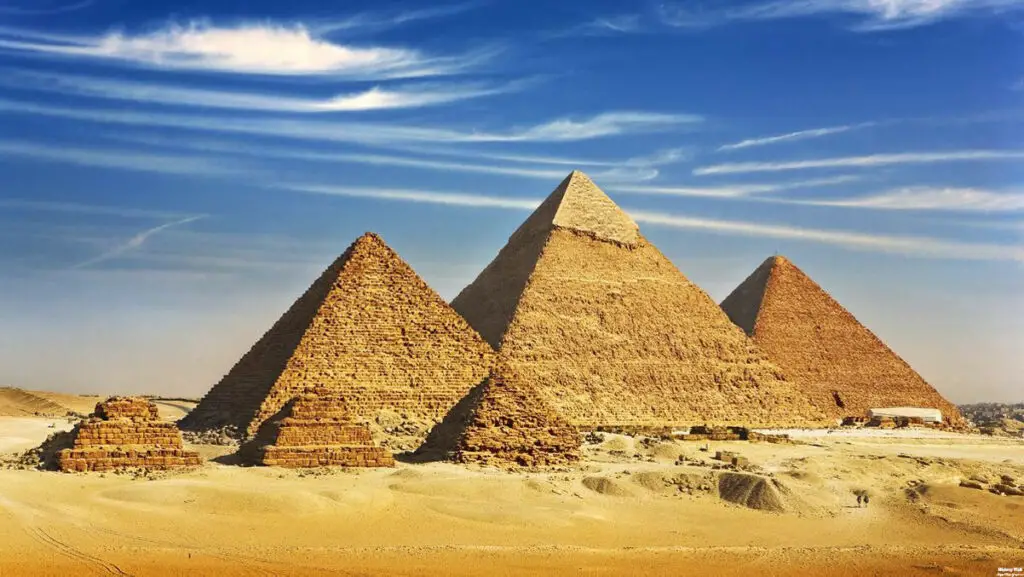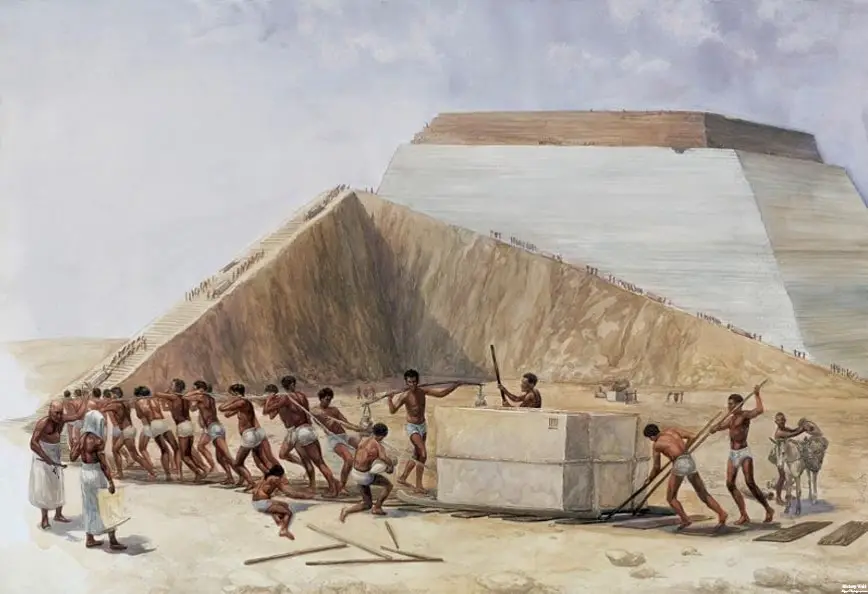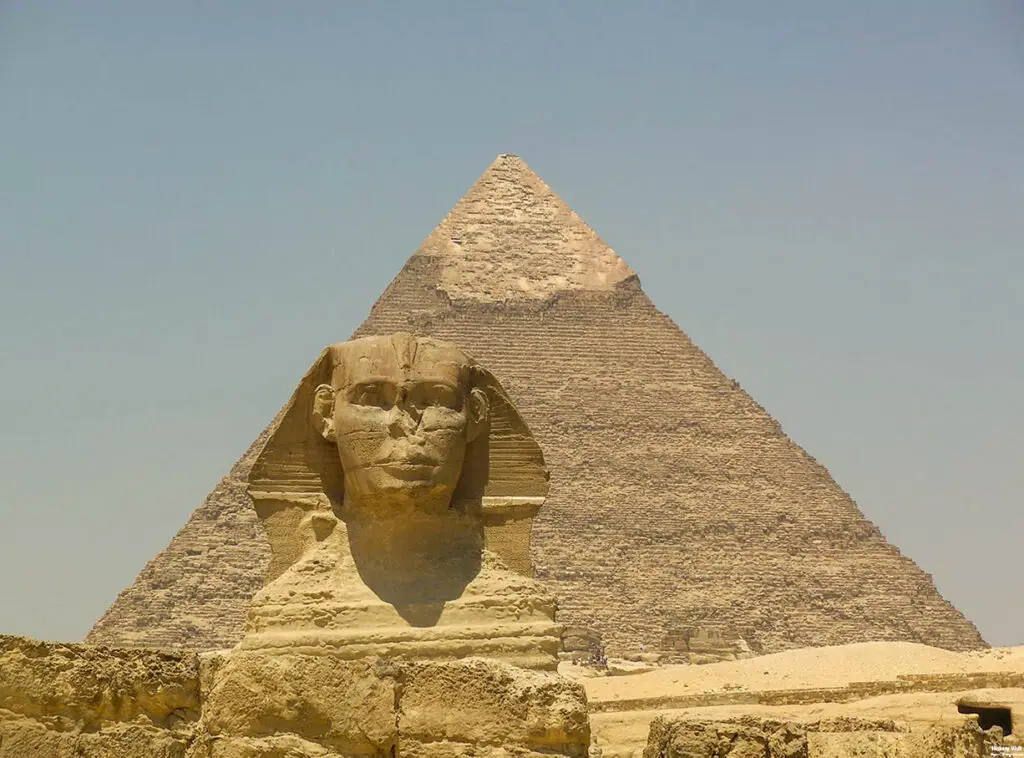Uncovering the Secrets of the Egyptian Pyramids: What They Don’t Want You to Know!

Introduction
The Pyramids of Egypt stand as some of the most iconic and enduring symbols of human civilization. Rising majestically from the desert sands, these ancient structures have fascinated scholars, tourists, and adventurers for millennia. Their sheer size, intricate design, and the mysteries surrounding their construction make them a subject of endless fascination and study. The pyramids are not just architectural marvels; they are a testament to the ingenuity, dedication, and spiritual fervor of ancient Egyptian society.
These monumental structures were built during Egypt’s Old Kingdom, primarily as tombs for the pharaohs and elite members of society. Each pyramid was part of a larger complex that included temples, causeways, and smaller pyramids for queens and other royal family members. The most famous of these pyramids, located at Giza, have stood the test of time and remain a powerful symbol of ancient Egyptian culture and achievements.
Understanding the pyramids involves exploring their historical context, construction techniques, religious significance, and lasting impact on both ancient and modern societies. This article will delve into these aspects, providing a comprehensive overview of the pyramids’ significance and legacy.
Origins and Construction

The origins of pyramid construction in Egypt can be traced back to the early dynastic period. The earliest pyramids, such as the Step Pyramid of Djoser at Saqqara, mark a significant evolution in architectural techniques. Built during the Third Dynasty by the architect Imhotep, this pyramid introduced the concept of stacking mastabas (flat-roofed rectangular structures) to create a stepped structure. This design served as a precursor to the smooth-sided pyramids that would follow.
The transition to smooth-sided pyramids began during the Fourth Dynasty with the construction of the Red Pyramid at Dahshur, attributed to Pharaoh Sneferu. Sneferu’s experimentation with pyramid design culminated in the Bent Pyramid and ultimately the Red Pyramid, which successfully achieved the smooth sides that would define subsequent pyramids. These advancements in design and engineering set the stage for the construction of the Great Pyramid of Giza, one of the Seven Wonders of the Ancient World.
Building the pyramids required immense resources and labor. Contrary to popular belief, recent evidence suggests that the workforce consisted of skilled laborers rather than slaves. These workers were organized into well-coordinated teams, living in nearby temporary settlements. The construction process involved quarrying massive limestone and granite blocks, transporting them to the construction site, and meticulously assembling them into the pyramid’s structure. The precision and skill demonstrated in aligning the pyramids with celestial bodies further highlight the advanced knowledge of ancient Egyptian architects.
Famous Pyramids

Among the many pyramids that dot the Egyptian landscape, the Great Pyramid of Giza stands out as the most renowned and awe-inspiring. Built for Pharaoh Khufu around 2580-2560 BCE, it originally stood at 146.6 meters (481 feet) and remained the tallest man-made structure in the world for over 3,800 years. The Great Pyramid’s precise alignment with the cardinal points and its complex internal chambers and passageways continue to baffle researchers and engineers.
The Pyramid of Khafre, Khufu’s son, is the second-largest pyramid at Giza and is often mistakenly thought to be taller due to its elevated location and the intact casing stones at its apex. This pyramid is part of a larger complex that includes the Great Sphinx, a colossal limestone statue with the body of a lion and the head of a pharaoh, likely Khafre. The Sphinx adds another layer of mystery and grandeur to the Giza plateau.
The Pyramid of Menkaure, the smallest of the three major pyramids at Giza, completes the trio. Despite its smaller size, it remains an impressive feat of engineering. Menkaure’s pyramid complex also includes three smaller pyramids, thought to be intended for queens, and a mortuary temple. These pyramids, collectively, represent the zenith of pyramid construction and the architectural prowess of ancient Egypt.
Purpose and Symbolism

The primary purpose of the pyramids was to serve as tombs for the pharaohs, ensuring their journey to the afterlife. Ancient Egyptians believed in an elaborate afterlife where the deceased would live eternally, provided they were properly prepared and buried. The pyramids were designed to protect the pharaoh’s body and his possessions, which were believed to be necessary for the afterlife, including food, jewelry, and other valuable items.
The pyramids also symbolized the pharaohs’ divine status and their role as intermediaries between the gods and the people. The pyramid’s shape, pointing towards the sky, was seen as a way for the pharaoh’s soul to ascend to the heavens and join the gods. This symbolism was deeply rooted in the ancient Egyptian religion, which emphasized the connection between the earthly and the divine.
Moreover, the construction of the pyramids was an expression of the pharaoh’s power and a means to demonstrate their ability to mobilize resources and labor on an unprecedented scale. The pyramids served as enduring monuments to their reign, intended to immortalize their legacy for future generations. This aspect of the pyramids highlights the interplay between religious beliefs, political power, and architectural innovation in ancient Egypt.
Legacy and Modern Perspectives

The legacy of the pyramids extends far beyond their original purpose as royal tombs. Over the centuries, they have been a source of inspiration, mystery, and fascination for countless generations. Archaeologists and historians have dedicated their lives to uncovering the secrets of the pyramids, leading to numerous discoveries that have expanded our understanding of ancient Egyptian society, technology, and culture.
One of the most significant archaeological discoveries related to the pyramids is the tomb of Tutankhamun, which, although not a pyramid, has provided invaluable insights into the burial practices and treasures associated with ancient Egyptian royalty. The preservation of Tutankhamun’s tomb and its contents has helped to contextualize the grandeur and significance of the pyramids’ burial practices. Additionally, modern technology, such as ground-penetrating radar and 3D scanning, has allowed researchers to explore the pyramids’ internal structures without invasive methods, leading to new theories and findings about their construction and use.
The impact of the pyramids on modern architecture and culture is profound. They have influenced architectural designs worldwide, from the Louvre Pyramid in Paris to the Luxor Hotel in Las Vegas. The pyramids’ geometric precision and monumental scale continue to inspire contemporary architects and engineers. Furthermore, the pyramids are a major tourist attraction, drawing millions of visitors each year and contributing significantly to Egypt’s economy.
Conclusion

In conclusion, the Pyramids of Egypt stand as monumental achievements that reflect the ingenuity, ambition, and religious fervor of ancient Egyptian society. From their early origins and complex construction techniques to their symbolic significance and enduring legacy, the pyramids continue to captivate the imagination of people worldwide. They serve as a testament to the architectural prowess and cultural richness of a civilization that has left an indelible mark on human history.
The pyramids are more than just ancient structures; they are a window into the past, offering insights into the lives, beliefs, and achievements of the ancient Egyptians. As we continue to study and explore these incredible monuments, we uncover new layers of understanding and appreciation for their historical and cultural significance. The pyramids remind us of the incredible human capacity for creativity, innovation, and the pursuit of immortality.
As we look to the future, the pyramids will undoubtedly remain a subject of fascination and study. Advances in technology and ongoing archaeological efforts promise to reveal even more about these ancient wonders. The pyramids of Egypt, with their timeless beauty and enduring mysteries, will continue to inspire and captivate generations to come.


